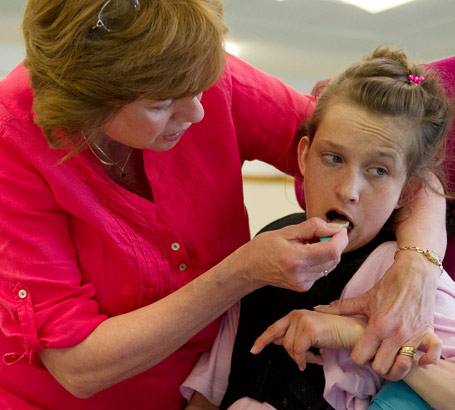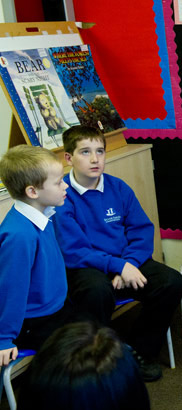Children with learning difficulties are taught within a range of specialist settings, special schools and mainstream schools. Watch this video montage of the start of a school day at a special school for secondary aged children.
Notice that the children all arrive in a bus; there are no parents/carers at the gate.
All pupils at this school have a statement of special educational needs. Many have complex needs.
Many special schools take pupils aged 2–19 years.

The impact on planning for teaching and learning for such a diverse range of pupils is enormous.
List the reasons why. What are the implications for planning? Where would you start?
Implications for planning
Listen to the two audio clips of a headteacher describing what her starting point for planning to meet the needs of her
pupils is. Does it
match yours?
-
 Headteacher 12:04
Headteacher 12:04 -
 Headteacher 21:35
Headteacher 21:35
setting (1)

Things that special schools need to consider when planning include:
- The wide age range (often 2 to 19)
- The wide range of need, e.g. ASC, sensory impairment, physical difficulties
- The range of ability, e.g. attainment might be from GCSE to p-scales
- Use specialist equipment and other adaptations, e.g. hoists
- The range of adult support children need - deploying and coordinating adults
- Liaison with other professionals, e.g. physiotherapists, speech and language therapists, school nurse and incorporating specialist programmes in class.

When pupils have complex needs assessing and monitoring progress is critical to ensure that the appropriate educational
and therapeutic experiences are being made available to them.
Planning time to assess and moderate children's work will affect on the teaching and learning that takes place.

Adapted curriculum planning – long, medium and short term – needs to be in place to ensure that pupils receive
the best education possible.
Staff need to understand the impact on learning of children's individuals learning difficulties and how to minimise or remove
barriers to their learning.
school setting (4)

As in any school, planning in a special school has to be at three levels:
- Whole School
- Classroom, and
- Individual.
Where the emphasis lies will depend on the complexity of the population served and the consideration that needs to be given
to the individual needs of each child.
Look at this example of a class timetable that resulted from the planning process in a special school.

Look at these examples of planning models currently used in settings educating children with learning difficulties and disabilities. Included are examples of long, medium and short-term planning. Consider the merits of each and select one you might like to try in your setting.
